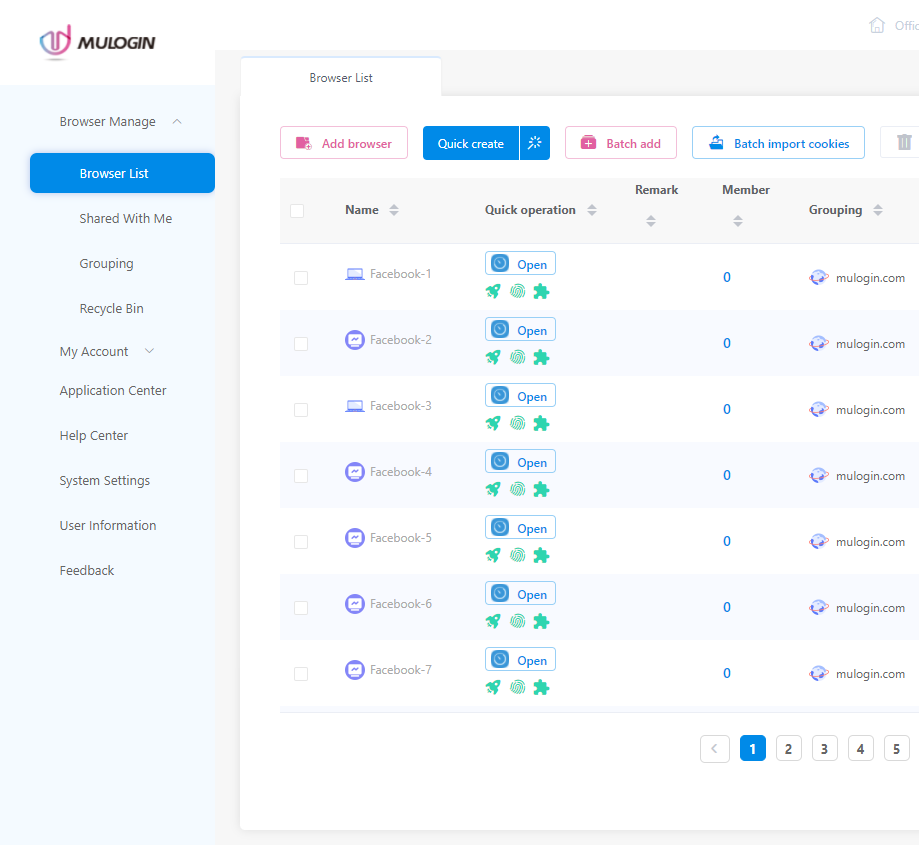Facebook is one of the world’s largest social media platforms, founded in 2004. It was founded by Harvard students such as Mark Zuckerberg and was initially a social network limited to college campuses. Over time, Facebook has evolved into a global social media platform with billions of users.
Facebook’s multi-account strategy means that a user can create and manage multiple accounts, each with its own separate profile, friends list, and permission settings. The importance of this strategy is reflected in the following aspects.
First, the multi-account strategy can help users better manage different social circles. In real life, we may have different identities and roles and need to keep in touch with different groups of people. By creating multiple accounts, users can divide their social networks into different circles, such as family members, friends, and colleagues. In this way, users can more easily keep in touch with specific groups of people and share different information as needed.
Second, the multi-account strategy helps to protect users’ privacy and security. In the age of the Internet, privacy and security issues have become increasingly important. By using multiple accounts, users can better control the visibility of their personal information. They can choose to share different levels of private information in different accounts to ensure that only the right people have access to that information. In addition, if one account is hacked or stolen, users can still rely on other accounts to continue using Facebook without completely losing access to the platform.
Third, a multi-account strategy can help users better manage the balance between their personal and professional lives. Many people are not just personal users on Facebook but may also have their own business or brand accounts. By creating multiple accounts, users can manage their personal and professional content separately, ensuring consistency between their personal brand image and their professional image. This is especially important for entrepreneurs, freelancers and personal brand builders.
So how should you implement a multi-account strategy for Facebook? Here are some ways and suggestions:
1. Users can sign up for different accounts using different email addresses and cell phone numbers. This ensures that each account has separate login credentials and can be registered with different identifying information.
2. Facebook allows users to create and manage pages. Users can create dedicated pages to represent their brand, business or organization. This allows users to separate personal and professional content and have better management and promotion opportunities.
3. Users can use Facebook’s privacy settings to control the visibility of different accounts. Users can set the privacy level of each account according to their needs to ensure that only a specific group of people can access the content of a specific account.
4. Facebook accounts can be easily blocked due to account linkage. To ensure the security of each account, you can use a tool such as MuLogin Fingerprint Browser to assist you.
MuLogin Anti-Detection Browser provides a separate browser profile with a unique fingerprint. When setting up a profile, the user can set up a proxy for the profile. Each browser profile sets a different proxy IP address. Then, when you run accounts in different profiles, you can realize multiple accounts on the same computer without being associated, thus avoiding being blocked.
New users can try it for a three-day free trial!

